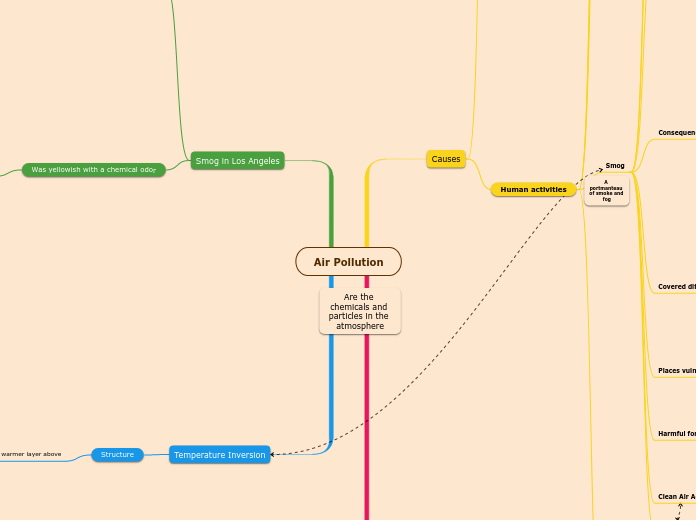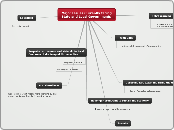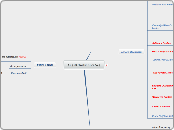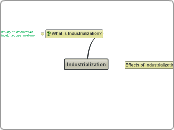A portmanteau of smoke and fog
Climate change
It increase SMOG
Because of the high level of heat and UV radiation
Are the chemicals and particles in the atmosphere
If after constructing the VMOST tree for your organization you have no open questions, then you can be confident that your organization is well informed and well-aligned around your vision, mission, and strategy.
If you have any open issues from the analysis, then you should resolve these and communicate your vision, mission, and strategy again.
Many organizations have a vision, mission, and objectives but go straight to action, without having a strategy for understanding and solving difficult problems. This is the most likely area for further leadership.
Air Pollution
Type in the name of your organization.
Temperature Inversion
Structure
Is a pollution-filled layer of air that remains trapped near the Earth´s surface by a slightly warmer layer above
Smog in Los Angeles
Was yellowish with a chemical odor
So, the scientist Arie Haagen-Smit indentified two culprits
VOCs and Nitrogen oxides, which react with sunlight
Decrease yield
Damage and weaken crops
VOCs and Nitrogen oxides produce PANs and Tropospheric or ground-level ozone
Produce
Damage lung tissue
Eye irritation
Nitrogen oxides
Produced by the incomplete combustion of gas in motor vehicles
Volatile Organic Compounds (VOCs)
Some are from manmade sources
Petroleum
Glues
Solvents
Some are naturally produced
Animals
Plants
Might contain
Sulfur
Chlorine
Hydrogen
Oxygen
Carbon
Are compounds that easily became vapor
It first "appeared" in July 26, 1943
To deliver this objective, you will need to work strategically.
For any objective, there will be obstacles and problems.
Your strategy should show that you understand the key problems, and know how to solve them.
Example: Establish a high-value exclusive brand to limit competition.
Solutions
Limit toxic pollutants
In one sentence, summarise your mission.
Your mission states how you express your vision - what you are aiming to do, to make your vision into reality.
Example: to be the leading supplier of organic foods in your area
Which are caused by
Review your vision statement and mission statement together.
Does your mission statement bring your vision to life? Do the targets in your mission statement align with your vision?
YesNoOther
Electricity generation
Manufacturing
Transportation
By decreasing the use of fossil fuels
Causes
Human activities
Review your Vision statement:
Does your vision really reflect the values and beliefs that motivate you and your staff?
YesNoOther
Toxic pollutants
Health problems
Reproductive complications
Cancer
The components are...
They are caused because
Burning of gasoline
Waste incineration
It is released during gas or coal combustion
Benzene
Dioxins
Lead
Mercury
Smog
Regulations
In vehicles emissions and gas content in the USA
Clean Air Act
Banned Coal in certain parts of the city
Was signed in 1956
Harmful for...
Pregnants
Birth defects
Produce low birth weight
Older people
Young people
Places vulnerable to smog are the ones which
Lying in a basin
Are surronded by mountains
Covered different cities like
Edinburgh
Glasgow
London
Great Smog of London
Cause 4,000 respiratory deaths
Shut down all transportation
Was affected by industrial smog
Because of high humidity
Consequences
Increase the risk of respiratory infections
Bronchitis
Exacerbate conditions
Emphysema
Asthma
Irritate
Throat
Nose
Eyes
Cause respiratory distress
Irritates eyes
Harm plants
There are two types, Sulfurous and Photochemical
Combine
Local weather and geography
Manmade pollution
Photochemical
Is the result of the reaction between
Volatile organic compounds
Cleaning solvents
Paints
Gasoline
Nitrogen Oxides
Is produced because
Factory emissions
Coal power plants
Car exhaust
Sunlight
Sulfurous
Made of sulfure oxides, burning coal
Produce serious health problems
Is a brown haze that reduce visibility
Greenhouse gases
More Pollen
This means more production
Because of the warm climate
Rise in mold
More frequent extreme weather
For example, Floods
Greenhouses gases are produce as we burn fossil fuels
Fluorinated gases
Nitrous Oxide
Methane
Carbon Dioxide
Agriculture
Energy use
Natural Sources
In one sentence, describe the vision of your organization. Your vision should:
- Inspire your staff
- Say something about your values
- Say something about your beliefs
- Be something you can always work towards
Example: You believe that sustainable organic foods are better for people and the environment
Allergens
Wildfires
Volcanic eruptions









